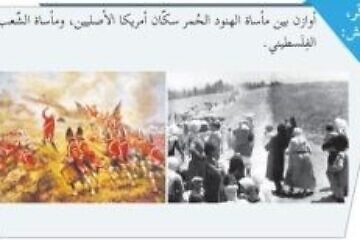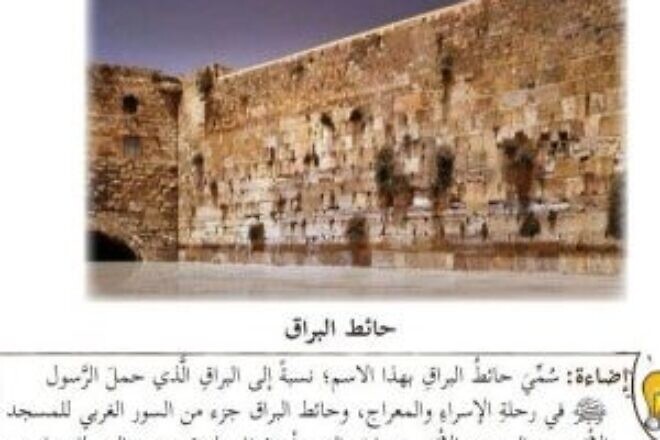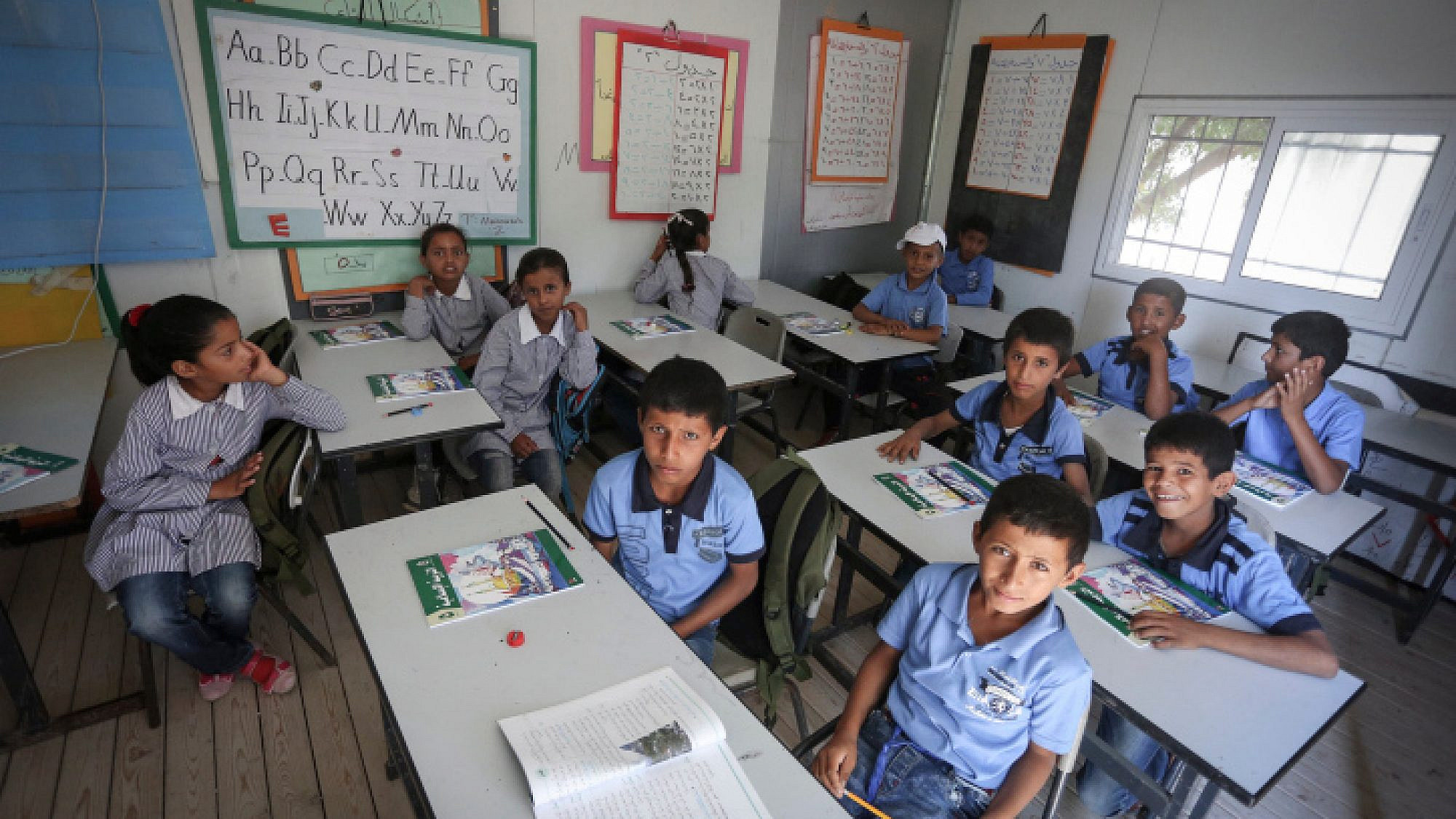The current war in the Middle East often leads policymakers to think of a two-state solution as a panacea for peace.
However, Palestinian Authority texts feature three fundamentals which belie any possibility of peace:
1. Delegitimization of Israel’s existence and the Jews’ very presence in the country, which includes denial of their history and of the existence of any Jewish holy places there.
2. Demonization of both Israel and Jews, also religiously—with implications regarding the Jews’ image in the eyes of children who hail from a traditional society.
3. The absence of a call for peace with Israel. Instead, there is a call for a violent struggle for the liberation of the whole country, including pre-1967 Israel. This struggle is given a religious color and terror is made an integral part thereof, encouraging the murder of Jews.
Delegitimization
1. Israel’s Jewish citizens are considered foreign colonialists:
“We will think and discuss: I will compare the tragedy of the Indians, America’s original inhabitants, to the tragedy of the Palestinian people.” (Social Studies, Grade 8, Part 2 (2020) p. 34)

2. The country’s Jewish history is denied, including the existence of archaeological items proving that “… [The conqueror has built for himself an artificial entity that derives its identity and the legitimacy of its existence from tales, legends and phantasies and has tried in various ways and means to create live material evidence for these legends, or archaeological architectural proofs that would determine their truth and authenticity, but in vain.”] (Arabic Language – Academic Path, Grade 10, Part 2 (2020) p. 68)
3. Existence of Jewish holy places in the country is denied, including the Western Wall in Jerusalem. Please note that the photograph has been cut in a way that would “hide” the Jews who pray there:
“Al-Buraq Wall”
“The Al-Buraq Wall has been named after Al-Buraq [the divine beast] that carried the Messenger [of God, i.e., Muhammad] during the Nocturnal Journey [from Mecca to Al-Aqsa mosque in Jerusalem, according to Islamic belief] and the Ascension [to Heaven]. The Al-Buraq Wall is part of the western wall of Al-Aqsa mosque. Al-Aqsa mosque, including the wall, is Palestinian land and an exclusive right of the Muslims.” (Islamic Education, Grade 5, Part 1 (2020) p. 63)

4. Having been considered foreign settlers, Jews in the country are not counted as legitimate inhabitants and the cities they built there, including Tel Aviv, are absent from maps in the texts used in P.A. schools. The P.A. school map here, titled “Map of Palestine,” does not show any Jewish city, except the southern city of Eilat that appears under the Arabic name for the desolate place where it was later built—“Umm al-Rashrash.”

(Social Studies, Grade 6, Part 1 (2020) p. 6)
5. The Jews’ historical and religious ties to Jerusalem are ignored. According to the P.A. textbooks, Jerusalem was built by the Palestinians’ Arab ancestors (i.e., the “Arabized” Canaanites and Jebusites) and is holy to Muslims and Christians alone. Jews are not mentioned in this context: “Jerusalem is an Arab city built by our Arab ancestors thousands of years ago. Jerusalem is holy only to Muslims and Christians.” (National and Social Upbringing, Grade 3, Part 1 (2020) p. 29)
6. A short historical description of the city’s names features a huge gap of 1,000 years between the Jebusites and the Romans, that is, the Jewish historical period. The name “Jerusalem” with its various forms that is used in hundreds of languages around the world is completely absent:
“The city of Jerusalem was known as ‘Jebus’ after the Arab Jebusites who built it 5,000 years ago. When the Romans occupied it they named it ‘Aelia.’ Later on it came to be known as ‘Al-Quds’ or ‘Bayt al-Maqdis,’ after the Muslims had conquered it at the hands of Caliph Umar ibn al-Khattab in 637 CE…” (Geography and Modern and Contemporary History of Palestine, Grade 10, Part 1 (2020) p. 43)
Demonization
1. Jews, sometimes referred to as “Zionists” with no real differentiation between these two terms, are demonized and accused of harboring genocidal intentions towards the Palestinians: “The Zionists have established their entity upon terror, extermination and colonialism. We will explain that. (Arab Language—Academic Path, Grade 10, Part 2 (2020) p. 28)
2. Jews are demonized as infidels and as the Devil’s aides. A verse taken from a poem: “Where are the horsemen [who will ride] to Al-Aqsa [mosque] to liberate it from the grip of infidelity, from the Devil’s aides?”
(Arabic Language, Grade 7, Part 1 (2020) p. 67)
3. The Jews are also demonized outside the context of the war, as enemies of Prophet Muhammad and Islam in its early years. They are given negative traits such as treachery and hostility, which makes them eternal enemies of Muslims today:
“But the Jews [in the city of Medina] did not respect the treaty [they had concluded with Muhammad] and resorted to all types of treachery, betrayal and aggression which forced the Muslims to fight them.” (Islamic Education, Grade 7, Part 1 (2020) p. 52)
4. Moreover, Jews are presented as enemies of God’s prophets and, by implication, enemies of God himself, a portrayal that has an enormous impact on students who come from a traditional society: God’s enemies should be fought against until their utter destruction.
The following example features the first out of several lessons to be learned from a chapter about Jesus Christ, who is considered a prophet in Islam: “exposing the nature of the Children of Israel and their hostility to the prophets.” (Islamic Education, Grade 9, Part 2 (2020) p. 21)
Encouraging the Murder of Jews
The murder of Jews is featured as an integral part of the liberation struggle, and featured on the first page of a four-page lesson exalting the female commander of a terror attack against an Israeli civilian bus on Israel’s Coastal Highway in 1978 where over 30 Jews—men, women and children—were murdered:
“Dalal al-Mughrabi”: Glorifying a murderer in the classroom
“In front of the text: Our Palestinian history is replete with many names of martyrs who sacrificed their souls for the homeland, among whom is the martyr Dalal al-Mughrabi, who painted with her struggle a picture of challenge and bravery that has made her memory eternal within our hearts and minds. The text before us shows her struggle and journey.” (Arabic Language, Grade 5, Part 2 (2020) p. 51)

In conclusion, the nascent Palestinian Authority textbooks delegitimize the existence of the State of Israel, and the very presence of its 7 million Jewish citizens in the country, whose history and holy places there are denied.
The P.A. books never advocate a peaceful solution. Instead, they call for a violent struggle for the liberation of all of Palestine, with strong religious characteristics, which is not limited by the pre-1967 lines and in which terror plays a central role.
In other words, P.A. education allows no room for a “two-state solution.”
Dr. Arnon Groiss performed the research for this report.
Originally published by the Nahum Bedein Center for Near East Policy Research.

























